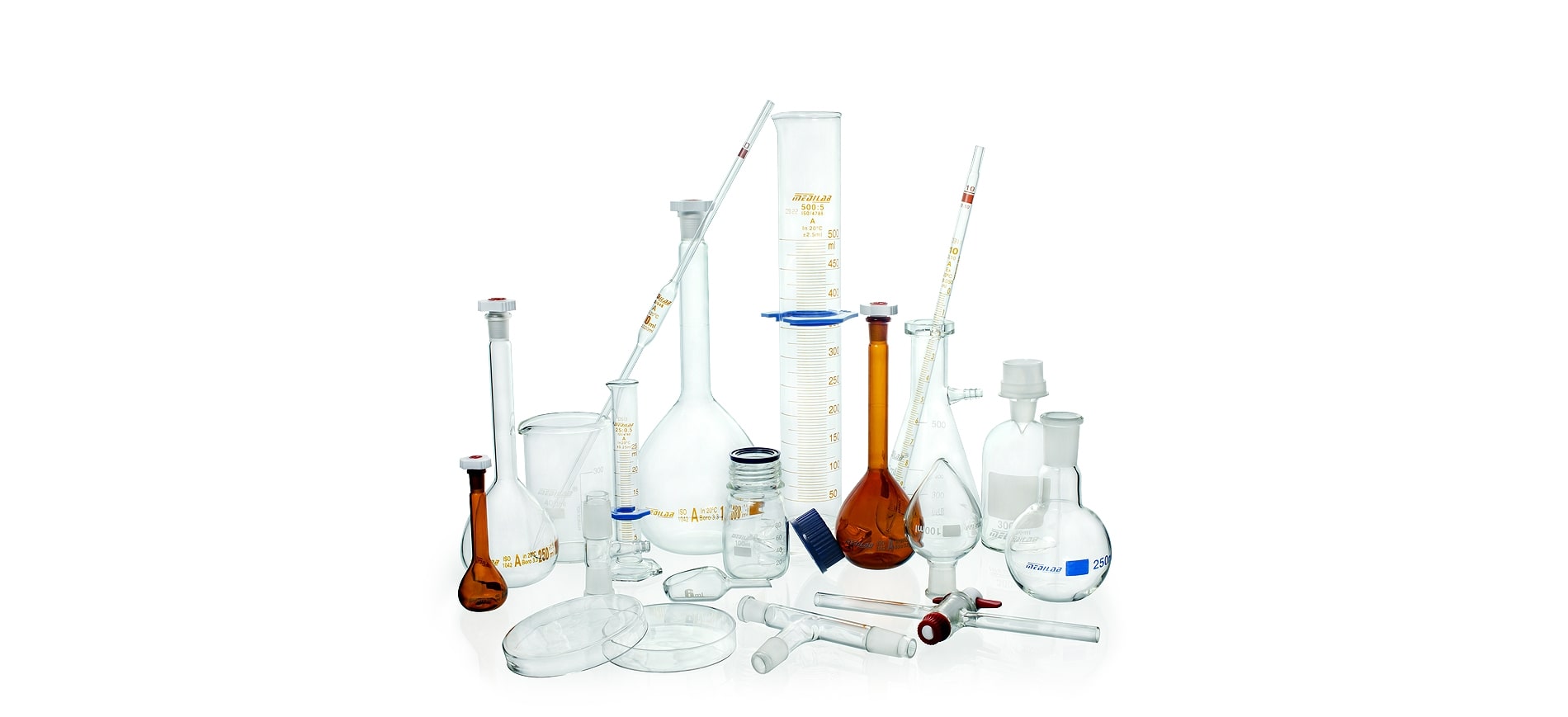Laboratory glassware is an important part of any science lab. Whether you’re working in a school lab, research centre, pharmaceutical company, or testing facility, using the right glassware helps you work safely and get accurate results.
In this blog, we’ll look at the Top 10 must-have glassware items and explain how they’re used in everyday lab work.
1. Beaker-
Use: Mixing, heating, and holding liquids
Beakers are one of the most common lab items. They come in many sizes and have a simple shape, usually with a spout for easy pouring. Though not used for precise measurements, they are great for mixing solutions, heating liquids over a flame, or collecting samples.
2. Erlenmeyer Flask–
Use: Mixing without spills and heating
This flask has a narrow neck and a wide base, which makes it perfect for swirling liquids without spilling. It’s also good for heating substances and can be sealed with a stopper when needed. It’s commonly used in titration and storage of solutions.
3. Volumetric Flask-
Use: Preparing exact solutions
Volumetric flasks are used when you need very accurate volumes. They have a long neck with a line marked for a specific volume. This makes them ideal for preparing standard solutions in chemistry or pharmaceutical labs.
4. Test Tube-
Use: Holding small samples and carrying out small reactions.
Test tubes are used for holding small amounts of liquids or chemicals during experiments. They are also used to grow cultures in biology or perform reactions that don’t need precise measurement.
5. Graduated Cylinder–
Use: Measuring liquids accurately
Graduated cylinders are tall and narrow with marked lines for measuring liquid volumes. They are more accurate than beakers and flasks when it comes to measurement, making them useful for making solutions or dividing samples evenly.
6. Burette–
Use: Delivering exact volumes in titration
Burettes are long tubes with a tap at the bottom. They are used in titration experiments to add liquids slowly and with precision. This is especially helpful when testing the concentration of a substance.
7. Pipette–
Use: Transferring small amounts of liquid accurately
Pipettes are used to move very small volumes of liquid from one container to another. There are different types—volumetric, graduated, and micropipettes—each for different levels of accuracy.
8. Funnel–
Use: Pouring and filtering liquids
Funnels help transfer liquids into containers with narrow openings. When used with filter paper, they’re also helpful in separating solids from liquids during filtration.
9. Watch Glass-
Use: Holding small samples and evaporating liquids
A watch glass is a small, curved piece of glass that looks like a lens. It is used to hold solids during weighing, to evaporate liquids, or to cover beakers during reactions.
10. Reagent Bottle–
Use: Storing chemicals safely
Reagent bottles are used to store liquids or powders used in experiments. They are made from chemical-resistant glass and usually have tight-fitting caps to prevent contamination or evaporation.
Why Quality Matters-
Using the right type of glassware helps ensure your work is accurate and safe. Poor-quality glassware can break easily, give incorrect results, or even cause accidents. That’s why choosing strong, heat- and chemical-resistant glassware is very important, especially in high-precision labs.
FAQS about Laboratory Glassware-
Q1: Why is glassware preferred over plastic in labs?
A: Glassware can withstand high temperatures, is more resistant to chemicals, and doesn’t absorb liquids or odours like plastic might. It also allows for easy cleaning and reuse.
Q2: How do I know which glassware to use for my experiment?
A: It depends on your goal. Use beakers or flasks for mixing, pipettes for transferring small volumes, graduated cylinders for measuring, and volumetric flasks for preparing precise solutions.
Q3: Can laboratory glassware break from heat?
A: Yes, if it’s not made from heat-resistant glass like borosilicate. Always use heat-resistant glassware when heating is involved.
Q4: How should I clean laboratory glassware?
A: Rinse with water after use, use lab-grade detergents if needed, and dry completely before storing. Avoid scratching the surface to maintain clarity and durability.
Q5: Is it okay to use a beaker for measuring exact volumes?
A: Beakers give rough estimates. For accurate volume measurement, use graduated cylinders, burettes, or volumetric flasks.
Why Choose MEDILAB for Your Laboratory Glassware?
At MEDILAB, we know how important it is to have dependable and safe glassware. We’ve been manufacturing high-quality laboratory glassware for over 30 years and supplying labs in more than 35 countries.
Here’s what makes MEDILAB your trusted partner:
- ✅ Durable and heat-resistant glass
- ✅ Wide range of glassware for every lab need
- ✅ Customized orders available
- ✅ Bulk supply options for distributors
- ✅ Trusted by labs and institutions worldwide
Whether you’re a distributor or a lab professional, MEDILAB is your go-to source for laboratory glassware that performs consistently and safely.
Ready to equip your lab with the best glassware?
Visit our website and explore our full catalogue today!



